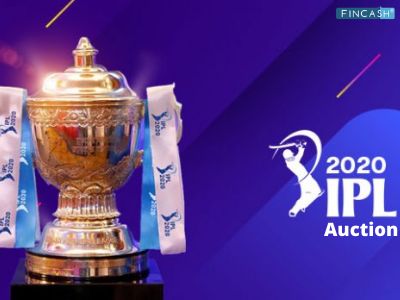
Table of Contents
Petrol Price in India Today (Date)
Link - https://economictimes.indiatimes.com/wealth/fuel-price/petrol Link - https://www.bajajfinservmarkets.in/fuel/petrol-price-in-india.html
Petrol Prices in Metro Cities
State Wise Petrol Price
City Wise Petrol Price
How to Check Petrol Price Regularly?
| Options | HP | BPCL | Indian Oil |
|---|---|---|---|
| SMS | Type: HPPRICE DEALER CODE and send it to 9222201122 |
Type: RSP DEALER CODE and send it to 9223112222 |
Type: RSP DEALER CODE and send it to 9224992249 |
| Online Service | Visit www[dot]hindustanpetroleum[dot]com and then go to “Pump Locator” | Visit www[dot]bharatpetroleum[dot]in and then go to “Pump Locator” | Visit www[dot]iocl[dot]com and then go to “Pump Locator” |
GST on Petrol Prices
Goods and Service Tax (GST) Act came into effect in the country in July 2017. It categorises goods and services into four tax slabs of 5%, 12%, 18%, and 28%. Currently, petroleum products such as crude oil, natural gas, diesel, LPG and petrol are not under the ambit of GST. They are subject to central excise duty and state specific VAT.
VAT/ Sales Tax on Petrol Price in India
The table below gives you the information on VAT/Sales Tax percentage imposed on petrol by the different states and Union Territories (UTs) in India. The data has been released by the Petroleum Planning and Analysis Cell (PPAC).
| States/ UTs | Sales Tax/VAT |
|---|---|
| Andaman & Nicobar Islands | 6% |
| Andhra Pradesh | 31% VAT + Rs.4/litre VAT+Rs.1/litre Road Development Cess and Vat thereon |
| Arunachal Pradesh | 20.00% |
| Assam | 32.66% or Rs.22.63 per litre whichever is higher as VAT minus Rebate of Rs.5 per Litre |
| Bihar | 26% or Rs. 16.65/Litre whichever is higher (30% Surcharge on VAT as irrecoverable tax) |
| Chandigarh | Rs.10/KL cess +22.45% or Rs.12.58/Litre whichever is higher |
| Chhattisgarh | 25% VAT + Rs.2/litre VAT |
| Dadra and Nagar Haveli and Daman and Diu | 20% VAT |
| Delhi | 30% VAT |
| Goa | 27% VAT + 0.5% Green cess |
| Gujarat | 20.1% VAT+ 4% Cess on Town Rate & VAT |
| Haryana | 25% or Rs.15.62/litre whichever is higher as VAT+5% additional tax on VAT |
| Himachal Pradesh | 25% or Rs 15.50/Litre- whichever is higher |
| Jammu & Kashmir | 24% MST+ Rs.5/Litre employment cess, Reduction of Rs.0.50/Litre |
| Jharkhand | 22% on the sale price or Rs. 17.00 per litre , which ever is higher + Cess of Rs. 1.00 per Ltr |
| Karnataka | 35% sales tax |
| Kerala | 30.08% sales tax+ Rs.1/litre additional sales tax + 1% cess |
| Ladakh | 24% MST+ Rs.5/Litre employment cess, Reduction of Rs.2.5/Litre |
| Lakshadweep | Nil |
| Madhya Pradesh | 33 % VAT + Rs.4.5/litre VAT+1%Cess |
| Maharashtra – Mumbai, Thane , Navi Mumbai, Amravati & Aurangabad | 26% VAT+ Rs.10.12/Litre additional tax |
| Maharashtra (Rest of State) | 25% VAT+ Rs.10.12/Litre additional tax |
| Manipur | 36.50% VAT |
| Meghalaya | 20% or Rs. 15.00/Litre- whichever is higher (Rs.0.10/Litre pollution surcharge) |
| Mizoram | 25% VAT |
| Nagaland | 25% VAT or Rs. 16.04/litre whichever is higher +5% surcharge + Rs.2.00/Litre as road maintenance cess |
| Odisha | 32% VAT |
| Puducherry | 23% VAT |
| Punjab | Rs.2050/KL (cess)+ Rs.0.10 per Litre (Urban Transport Fund) + 0.25 per Litre (Special Infrastructure Development Fee)+24.79% VAT+10% additional tax on VAT |
| Rajasthan | 36% VAT+Rs. 1500/KL road development cess |
| Sikkim | 25.25% VAT+ Rs.3000/KL cess |
| Tamil Nadu | 13% + Rs.11.52 per litre |
| Telangana | 35.20% VAT |
| Tripura | 25% VAT+ 3% Tripura Road Development Cess |
| Uttar Pradesh | 26.80% or Rs. 18.74/Litre whichever is higher |
| Uttarakhand | 25% or Rs. 19 Per Ltr whichever is greater |
| West Bengal | 25% or Rs.13.12/litre whichever is higher as sales tax+ Rs.1000/KL cess – Rs. 1000/KL sales Tax Rebate (20% Additional tax on VAT as irrecoverable tax) |
(As per details provided by OMCs)
Notes: For Petrol & Diesel, VAT/Sales Tax at applicable rates is also levied on Dealer’s commission in Arunachal Pradesh, Delhi, Gujarat, Haryana, Madhya Pradesh, Punjab, Rajasthan Chandigarh, Puducherry, Andaman & Nikobar, Meghalaya.
Breakup of Petrol Price
Here's a simplified calculation of break-up petrol price in New Delhi as on 5th July 2021.
| Petrol Price | |
|---|---|
| Crude Oil | Rs. 35.73 per Litre |
| Refinery Processing + Refinery Margins + OMC Margin + Freight Cost, Logistics | Rs. 4.39 per Litre |
| Fuel Price after Processing (Ready to send to Petol Pump) | Rs. 40.12 per Litre |
| Central Government Taxes & Dealer Commission | |
| Excise Duty + Road Cess as Charged by Central Government | Rs. 32.9 /Litre on Petrol |
| Commission to Petrol Pump Dealers | Rs. 3.79 per Litre |
| Fuel Cost Before VAT | |
| Price taken as on 5th July 2021 | Rs. 76.81 per Litre |
| VAT Calculation | |
| VAT (30% on Petrol and 16.75% on Diesel. Additional Cess on Diesel) | Rs. 23.05 / Litre |
| Final Retail Price in Delhi (as on 5th July'21) | Rs 99.86 per Litre |
Factors Impacting Petrol Price in India
Some of the most important factors that affect the prices of fuels in India are:
1. Crude Oil Prices
Crude oil, also known as unrefined oil, is a commodity in the international Market. A change in crude oil price in the international market directly influences an increase in petrol prices in the Indian domestic market. As India is also one of the biggest importers of crude oil, change in demand and supply of unrefined oil affects the petrol price.
Also, political events like wars, natural calamities, new government regulations affects the price of crude oil.
2. Tax Rates
When the government of India raises tax rates on fuels, the oil companies too increases the price of petrol. This is to recover and maintain the marginal profits. Hence, the price of the fuels changes on the Basis of these taxes.
3. OMC Costs
Oil Marketing Companies (OMC) refine crude oil into petrol and then sell it to the dealers. While selling petrol to dealers, these companies add their own profit margin, which includes transportation cost, refinery processing cost, operational costs, and others.
4. Rupee to Dollar Exchange Rate
The value of INR against USD is one of the major factors influencing the petrol price in India. As the USD is the base currency to buy raw oil, if the dollar strengthens against the INR, the buying cost of oil shall go up. On the other hand, when the Indian rupee strengthens against the dollar, the price of the crude oil declines, then the oil companies profit.
In simple words, if the USD is stronger, the cost of purchasing crude oil will be higher.
5. High Demand for Fuel
Due to the increase in the number of private vehicles on roads, the demand for fuel has been high. As the OMCs have to acquire crude oil from the international market, the demand and supply may not be always fulfilled. When the demand is high and supply is less, the price of fuels increases.
6. VAT
The VAT on petrol varies from state to state, therefore the petrol prices differ across different states and cities.
Major Petrol Pumps in India
The largest oil and gas company in India is the Indian Oil Corporation (IOC), which owns most of the filling stations in India. Hindustan Petroleum (HP) and Bharat Petroleum (BP) are amongst the most well-known petrol companies in India.
1. Indian Oil Corporation Limited
IOC, also known as IndianOil, is an Indian state-owned oil and gas corporation, which is headquartered in New Delhi, India. IOC operates the largest and widest network of fuel stations in the country, numbering about 20,575. Recently, it has also started Auto LPG Dispensing Stations. Apart from this, it also provides charging stations for electric vehicles at the stations.
According to the Fortune Global 500 list, IndianOil is the world’s 88th largest corporations and the largest public corporation in India ranked by revenue.
2. Hindustan Petroleum Corporation Limited (HPCL)
HPCL is an Indian state-owned oil and natural gas company, which is headquartered in Mumbai, Maharashtra. It operates two major refineries producing a wide variety of petroleum fuels and specialties in Mumbai of 7.5 million tonnes per year capacity and the other in Visakhapatnam, with a capacity of 8.3 million tonnes per year.
As per the Fortune Global 500 list, HPCL has been ranked 260th of the world’s biggest corporations (2013) and 4th among India’s Companies for the year 2012.
3. Bharat Petroleum Corporation Limited (BPCL)
BPCL is an Indian government-owned oil and gas corporation. It is headquartered in Mumbai, Maharashtra. It operates two large refineries in Mumbai and Kochi. BPCL was ranked 309th on the 2020 Fortune list of the world's biggest corporations, and 792nd on Forbes's 2021 "Global 2000" list.
4. Oil and Natural Gas Corporation (ONGC)
ONGC is an Indian government-owned crude oil and natural gas corporation. It produces around 70% of India's crude oil and around 84% of its natural gas. ONGC is the largest oil & gas exploration and production company in the country.
Oil and Natural Gas Corporation is ranked 7th among the Top 250 Global Energy Companies by Platts.
5. Reliance Petroleum Limited (RPL)
Owned by Mukesh Ambani of Reliance Industries Limited (RIL), Reliance Petroleum is an Indian petroleum company that specializes in oil and energy. With an annual crude processing capacity of 1,240,000 barrels per stream day, RPL is the largest refinery in the world.
All efforts have been made to ensure the information provided here is accurate. However, no guarantees are made regarding correctness of data. Please verify with scheme information document before making any investment.









